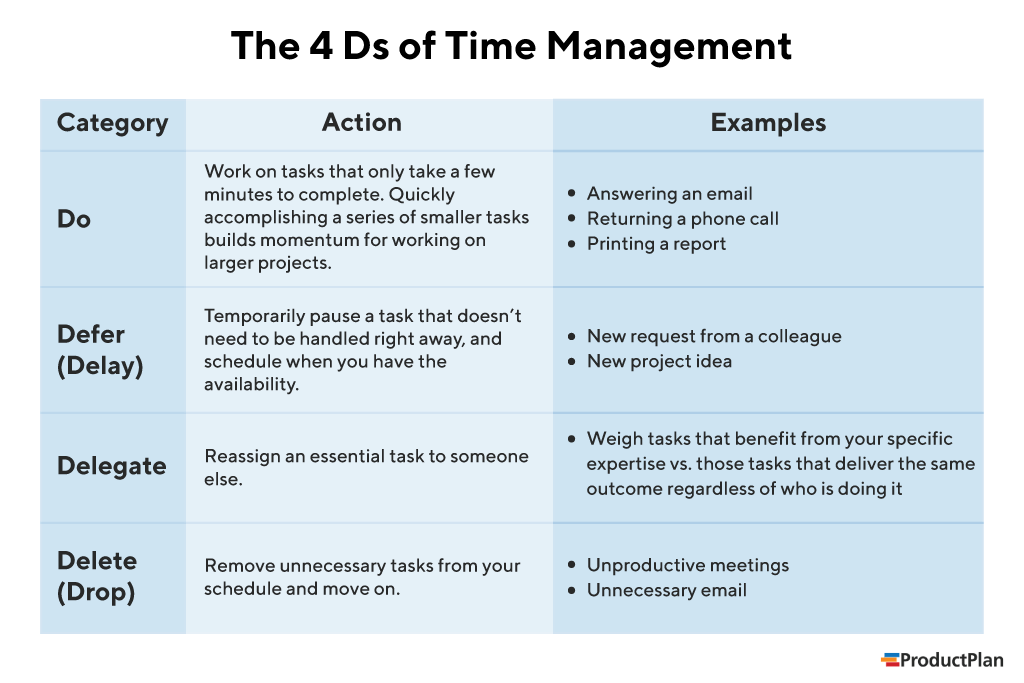The 4 Ds of Time Management | Definition and Overview
What are the 4 Ds of Time Management?
The 4 Ds of time management, sometimes referred to as the 4 Ds of productivity, is a popular strategy for discerning whether or not a task or project is worth your time. It involves making a quick decision about what to act on now either by doing it yourself or delegating to someone else, what to act on in the future, or what to drop from your to-do list.
The 4 Ds are: Do, Defer (Delay), Delegate, and Delete (Drop). Placing a task or project into one of these categories helps you manage your limited time more effectively and stay focused on what matters most to you.
Why are the 4 Ds Important for Product Managers?
Product managers (PMs) are notoriously busy and have a million and one requests and demands vying for their attention and time every day, all day. To keep projects and people moving in the right direction, PMs must effectively prioritize the constant flow of tasks to stay focused on what truly matters. Successful PMs become masters of time management.
How to Apply the 4 Ds Technique
We all have an ever-growing to-do list, and PMs are certainly no exception. Because our responsibilities and demands limit our time, we have to choose carefully how we spend this precious resource to make sure that we align our tasks with our larger goals.
To get started with the 4 Ds technique, look at your to-do list at the beginning of the workday and assess which tasks can be done quickly right now either by you or someone else on your team, which ones to drop altogether, and which essential tasks to defer for now.

As you gain more experience with the 4 Ds technique, you can apply this approach as tasks and requests cross your desk–even before they have a chance to land and take root on your to-do list.
John Rampton, CEO of Calendar, shares this advice:
“To get the most out of this simple and powerful time management technique, list and track your daily activities. It’s the only way that you’ll be able to see how you’re spending your time. And, more importantly, where it’s being wasted. You can either use a handwritten time log, your calendar, or software to track your time.”
A word to the wise: Commit to the task in front of you. If you’ve placed a task in the Do category, then by all means, do it and be done with it.
Want to learn even more? Watch the webinar on prioritization, below:
Related terms:


